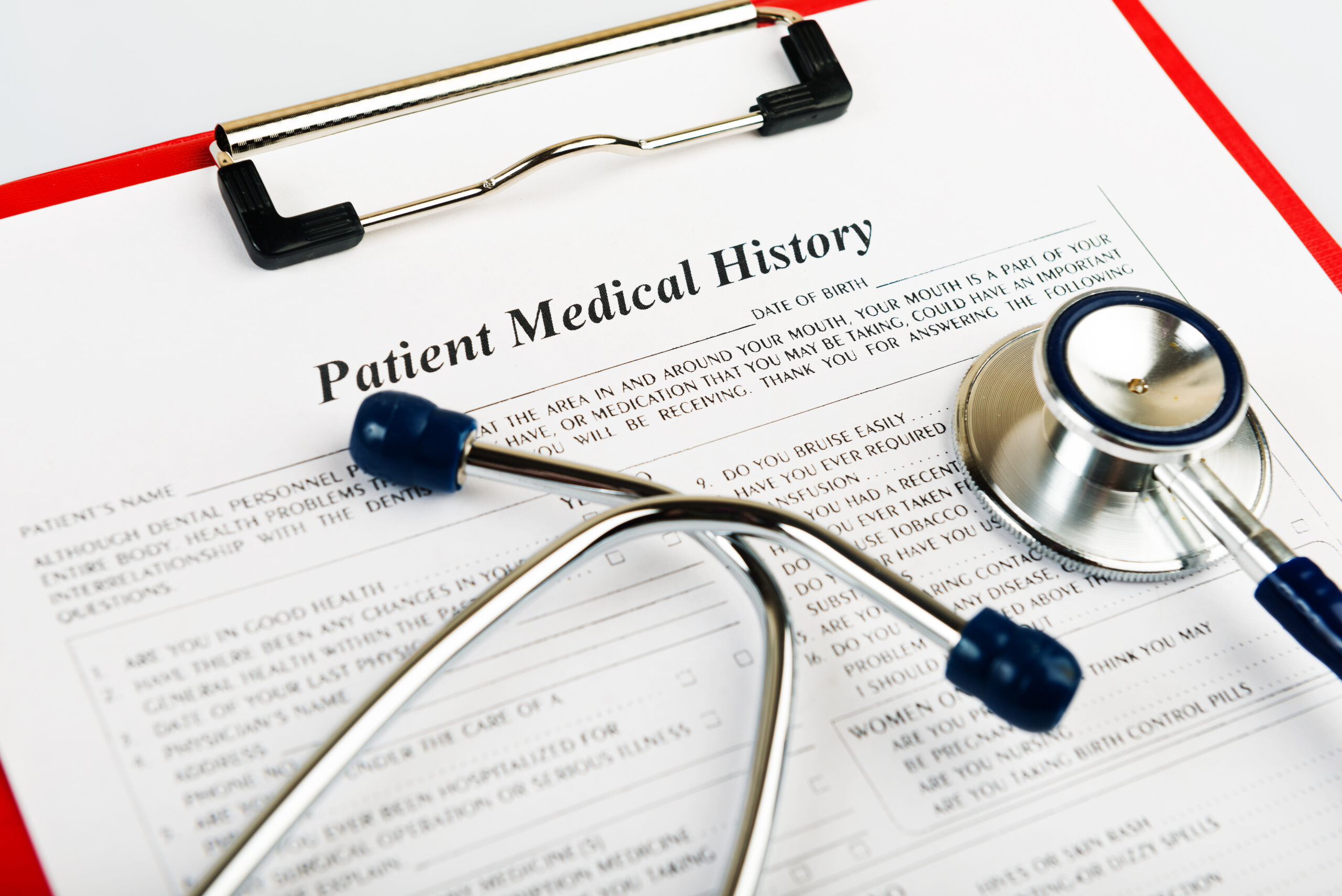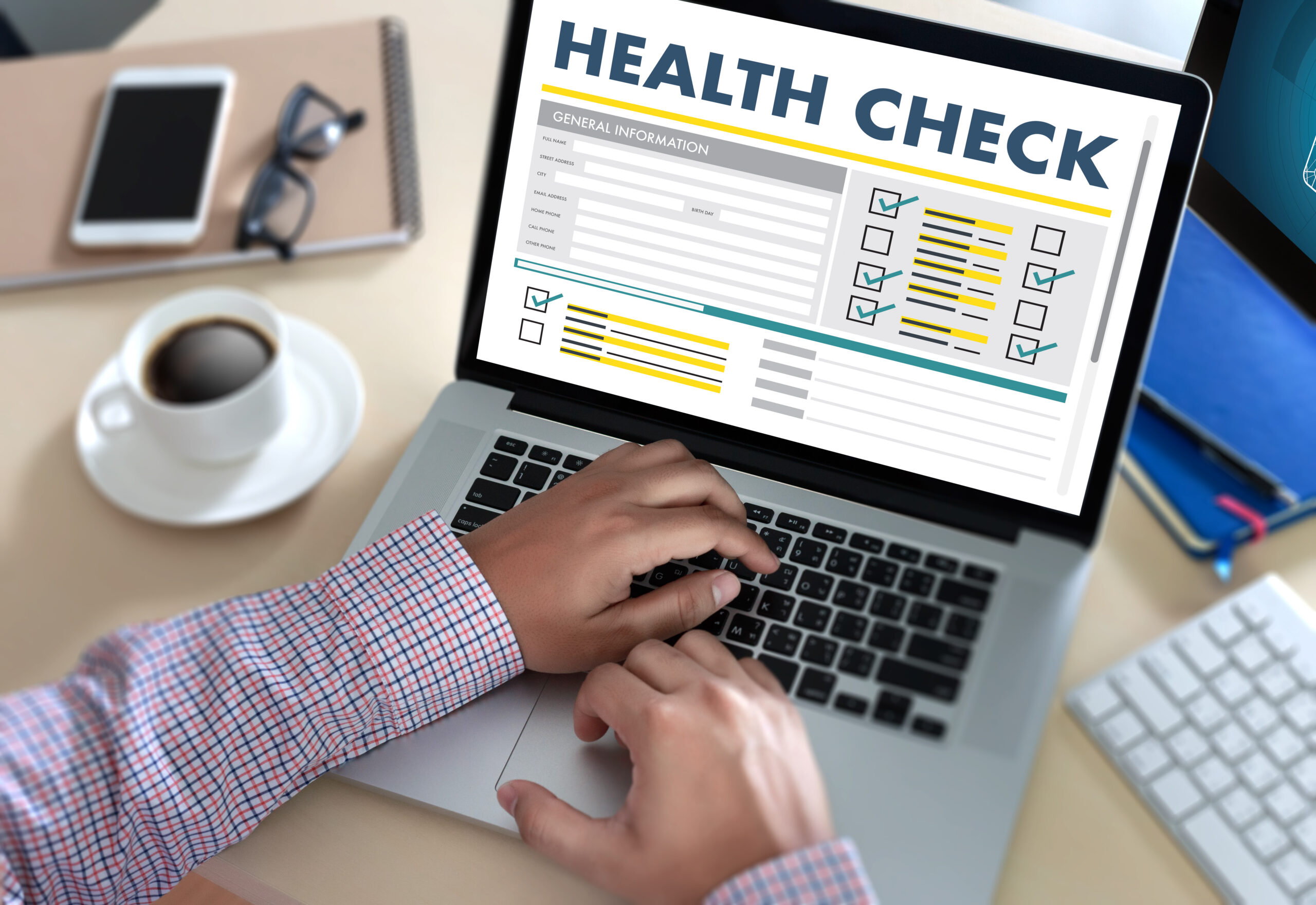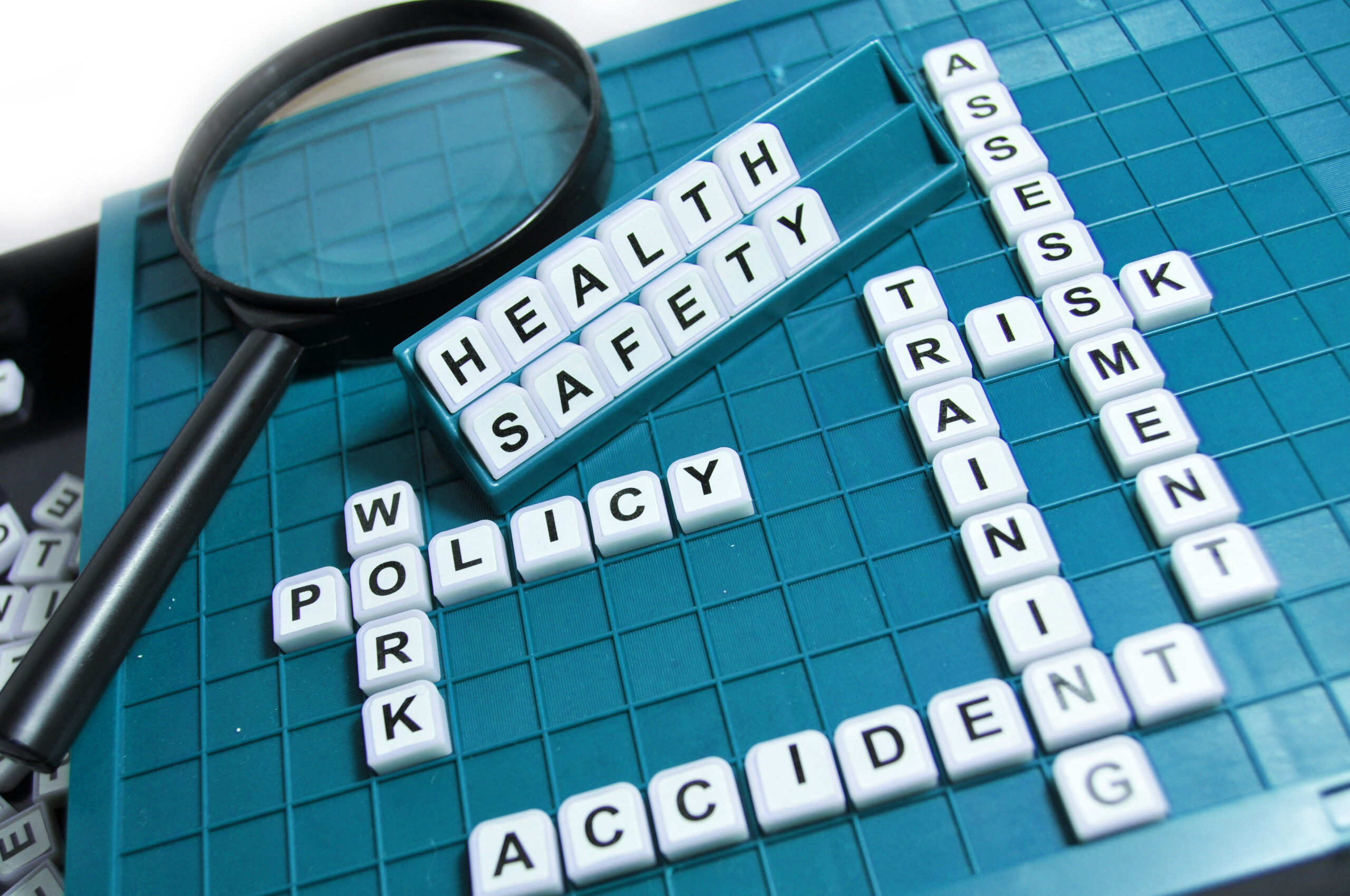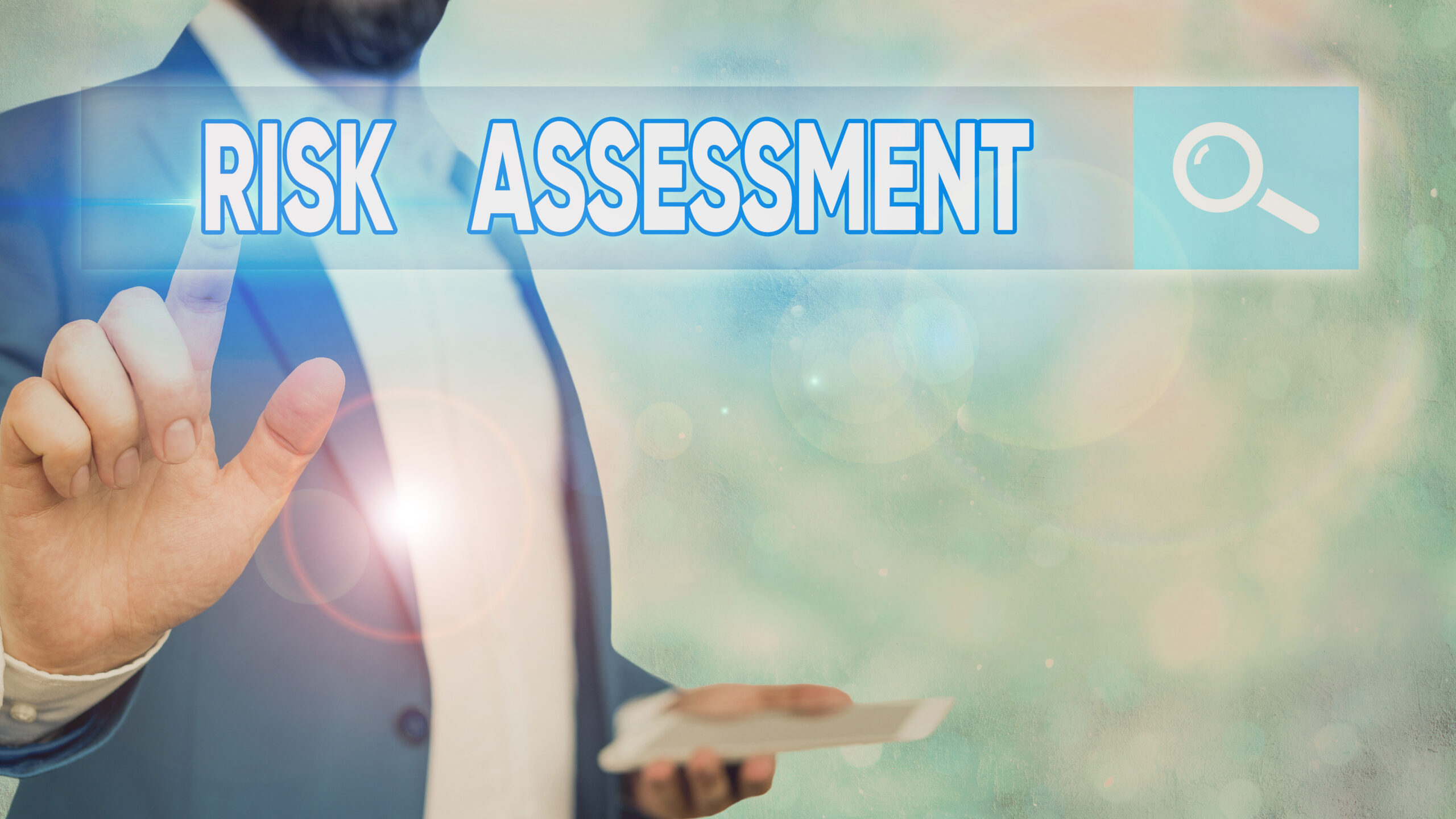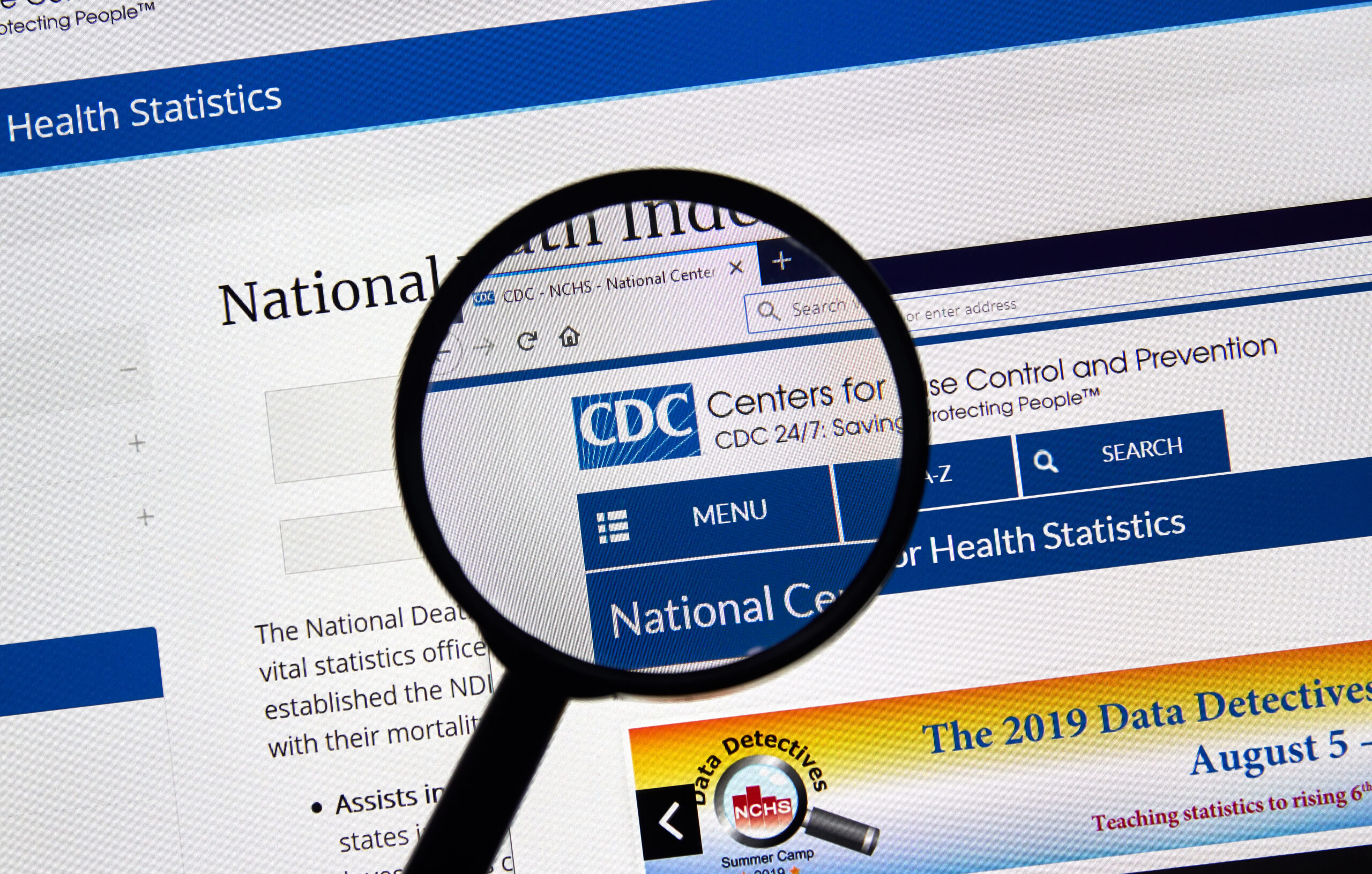When it comes to assessing health risks, there are several tools available. However, determining which tool is the best to use can be a challenge. It is important to choose a tool that is accurate, reliable, and appropriate for the individual being assessed.
One commonly used tool for health risk assessment is the Body Mass Index (BMI). BMI is a measurement of body fat based on height and weight. It is a simple and inexpensive tool that can be used by healthcare professionals and individuals alike to determine if they are at a healthy weight. However, it is important to note that BMI does not take into account factors such as muscle mass or body composition, which can affect its accuracy.
Another tool that can be used for health risk assessment is girth measurements. This involves measuring the circumference of various body parts, such as the waist, hips, and thighs. Girth measurements can provide a more accurate assessment of body fat distribution than BMI, particularly in individuals who are excessively overweight or underweight. However, it can be difficult to obtain accurate measurements, and the interpretation of the results can be complex.
Understanding Health Risk Assessment
Health risk assessment (HRA) is a tool used to identify potential health risks and hazards in individuals. It is a questionnaire that evaluates lifestyle factors, medical history, and health risks of an individual. The purpose of HRA is to provide an overall assessment of an individual’s health status and identify areas that may require attention.
The process of HRA involves several steps, including hazard identification, exposure assessment, dose-response assessment, and risk characterization. The first step, hazard identification, is the process of determining whether exposure to a stressor can cause an increase in the incidence of specific adverse health effects. The second step, exposure assessment, is the process of measuring or estimating the magnitude, frequency, and duration of exposure to the stressor. The third step, dose-response assessment, is the process of determining the relationship between the magnitude of exposure and the incidence of adverse health effects. The final step, risk characterization, is the process of estimating the probability of adverse health effects occurring in a population based on the exposure to the stressor.
HRAs can be used for different purposes, such as disease prevention, health promotion, and disease management. Disease risk assessments use an individual’s personal, genetic, and environmental information to determine a quantitative or qualitative value of risk for specific diseases. HRAs can also be used to identify modifiable risk factors and establish goals and strategies for better health.
There are many types of HRAs available, and each has its own strengths and weaknesses. Some HRAs focus on specific health issues, such as cardiovascular disease or diabetes, while others provide a comprehensive assessment of an individual’s overall health status. It is essential to choose the right HRA tool based on the individual’s needs and health concerns.
In conclusion, HRA is an essential tool for identifying potential health risks and hazards in individuals. It provides an overall assessment of an individual’s health status and identifies areas that may require attention. Choosing the right HRA tool is crucial to achieving the desired health outcomes.
Importance of Health Risk Assessments
Health risk assessments (HRAs) are important tools that can help individuals and healthcare providers identify potential health risks and take preventive measures to reduce or eliminate those risks. HRAs can provide valuable information about an individual’s health status, lifestyle factors, and risk factors for chronic diseases such as heart disease, diabetes, and cancer.
By identifying potential health risks early on, HRAs can help prevent the development of chronic diseases and improve overall population health. In addition, HRAs can help healthcare providers develop more effective treatment plans and improve the quality of healthcare services provided to patients.
HRAs can also be useful in healthcare planning and resource allocation. By identifying high-risk populations and specific health risks, healthcare providers can allocate resources more effectively and provide targeted interventions to those who need them most.
Overall, HRAs are an important tool for promoting preventive care, improving population health, and optimizing healthcare services. However, it is important to note that HRAs should not be used as a substitute for medical advice or regular check-ups with a healthcare provider. Rather, they should be used as a complementary tool to help individuals and healthcare providers identify potential health risks and take preventive measures to reduce those risks.
Tools for Health Risk Assessment
When it comes to determining health risk assessment, there are several tools available. Each tool has its own strengths and weaknesses, and the best tool for you will depend on your specific needs and circumstances.
Questionnaires
One of the most common tools for health risk assessment is the questionnaire. A health risk assessment (HRA) questionnaire is a set of questions that evaluates lifestyle factors and health risks of an individual. There are many types of HRAs, and they can be used for different purposes. For example, some HRAs are designed to assess an individual’s risk of developing a specific disease, while others are designed to assess an individual’s overall health status.
Algorithms
Another tool for health risk assessment is the algorithm. An algorithm is a set of rules or instructions that a computer program follows to solve a problem or complete a task. In the context of health risk assessment, algorithms are often used to predict an individual’s risk of developing a particular disease. These algorithms take into account a wide range of factors, including age, gender, family history, lifestyle factors, and medical history.
Risk Prediction Models
Risk prediction models are another tool that can be used for health risk assessment. These models use statistical analysis to predict an individual’s risk of developing a particular disease. They take into account a wide range of factors, including age, gender, family history, lifestyle factors, and medical history. Risk prediction models can be particularly useful for identifying individuals who are at high risk of developing a particular disease, allowing healthcare providers to take proactive steps to prevent or manage the disease.
Choosing the Best Tool for You
When it comes to choosing the best tool for health risk assessment, there is no one-size-fits-all solution. The best tool for you will depend on your specific needs and circumstances. For example, if you are looking to assess your overall health status, a questionnaire-based HRA may be the best option. On the other hand, if you are looking to predict your risk of developing a specific disease, an algorithm or risk prediction model may be more appropriate.
In conclusion, there are several tools available for health risk assessment, including questionnaires, algorithms, and risk prediction models. Each tool has its own strengths and weaknesses, and the best tool for you will depend on your specific needs and circumstances. It is important to consult with a healthcare provider to determine which tool is best for you.
Health Risk Assessment in Chronic Diseases
Health risk assessments (HRAs) are an essential tool in identifying and managing chronic diseases. Chronic diseases such as heart disease, cancer, diabetes, stroke, and obesity are some of the leading causes of death and disability worldwide. HRAs can help identify individuals who are at risk of developing these diseases and provide personalized recommendations to reduce their risk.
HRAs can be used to assess a range of chronic conditions, including breast cancer. For example, the Your Disease Risk Assessment Tool provided by the Public Health Sciences Division of Washington University in St. Louis is a simple, user-friendly tool that assesses an individual’s risk of developing various diseases, including breast cancer. The tool provides personalized recommendations based on an individual’s risk factors, such as age, family history, and lifestyle factors.
Another HRA tool that can be used to assess chronic diseases is the CDC Worksite Health Scorecard. This tool is designed to help employers assess the extent to which they have implemented evidence-based health promotion interventions or strategies in their worksites to prevent heart disease, stroke, and related conditions such as diabetes and obesity.
When it comes to managing chronic diseases, HRAs can be used to identify individuals who are at risk of developing complications associated with their condition. For example, HRAs can be used to identify individuals with diabetes who are at risk of developing complications such as kidney disease, blindness, and amputations. By identifying these individuals early, healthcare providers can provide targeted interventions to prevent or delay the onset of these complications.
In conclusion, HRAs are a valuable tool in identifying and managing chronic diseases. They can be used to assess an individual’s risk of developing chronic diseases such as heart disease, cancer, diabetes, stroke, and obesity, as well as identifying individuals who are at risk of developing complications associated with their condition. By providing personalized recommendations and interventions, HRAs can help individuals reduce their risk of developing chronic diseases and improve their overall health and well-being.
Role of Physicians and Clinicians

Physicians and clinicians play a critical role in the health risk assessment process. They are responsible for identifying patients who are at risk of developing chronic conditions and providing them with appropriate care management.
Physicians and clinicians can use various tools to determine a patient’s health risk assessment. These tools range from simple questionnaires to more complex algorithms that take into account multiple risk factors. The choice of tool depends on the patient’s individual needs and the physician’s clinical judgment.
Physicians and clinicians must also be aware of the limitations of health risk assessment tools. While these tools can provide valuable information, they are not perfect and should not be used as the sole basis for clinical decision-making. Physicians and clinicians should always consider the patient’s individual circumstances and preferences when making treatment decisions.
In addition, physicians and clinicians must be skilled in communicating health risk assessment results to patients. They must explain the results in a clear and understandable manner, taking care to avoid medical jargon and ensuring that the patient understands the implications of the results.
Overall, physicians and clinicians play a crucial role in the health risk assessment process. They must be knowledgeable about the available tools and their limitations, and be skilled in communicating results to patients. By working together with patients, they can help identify and manage health risks, and improve patient outcomes.
Health Risk Assessment in Workplace
Health risk assessment is an important tool for employers to understand the health risks associated with their work environment and to take appropriate measures to eliminate or reduce those risks. It is a method for estimating health risks from exposure to various levels of a workplace hazard. Understanding how much exposure to a hazard poses health risks to workers is important to appropriately eliminate, control, and reduce those risks.
Employers can use various tools to conduct health risk assessments. One such tool is the CDC Worksite Health Scorecard, which is designed to help employers assess the extent to which they have implemented evidence-based health promotion interventions or strategies in their worksites to prevent heart disease, stroke, and related conditions. The Health Scorecard is a useful tool for employers to evaluate the effectiveness of their health promotion programs and identify areas for improvement.
Another tool that employers can use for health risk assessment is the Health Risk Calculator. This tool is designed to help employers assess the health risks associated with their work environment and to develop strategies to reduce those risks. The Health Risk Calculator takes into account various factors such as age, gender, lifestyle, and work environment to provide a comprehensive assessment of health risks.
In addition to these tools, employers can also conduct employee surveys to assess the health risks associated with their work environment. Examples of employee surveys include Health Risk Appraisals, employee satisfaction and interest surveys, safety surveys, and routine inspections. These surveys can provide valuable insights into the health risks associated with the work environment and help employers develop strategies to reduce those risks.
Overall, health risk assessment is an essential tool for employers to ensure the health and safety of their employees in the workplace. By using the appropriate tools and conducting regular assessments, employers can identify potential health risks and take appropriate measures to eliminate or reduce those risks.
Privacy and Health Risk Assessment
When it comes to health risk assessment tools, privacy is a crucial factor to consider. With the increasing amount of personal health data being collected and analyzed, it is important to ensure that this information is protected from unauthorized access and disclosure.
One recommended tool for privacy and health risk assessment is the Security Risk Assessment (SRA) Tool developed by the Office of the National Coordinator for Health Information Technology (ONC) and the HHS Office for Civil Rights (OCR). This downloadable tool guides users through the process of assessing and managing security risks associated with electronic protected health information (ePHI). It helps organizations identify potential vulnerabilities and develop a plan to mitigate them.
Another tool to consider is the Privacy Risk Assessment Methodology (PRAM) developed by the National Institute of Standards and Technology (NIST). This tool helps organizations analyze and assess privacy risks for individuals arising from the processing of their data. It can be used to drive collaboration and communication between various components of an organization, including privacy, cybersecurity, business, and more.
When selecting a health risk assessment tool, it is important to consider the specific privacy requirements of your organization. Some tools may be more suited to certain types of data or industries. It is also important to ensure that the tool is up-to-date with current privacy regulations and standards.
Overall, the selection of a health risk assessment tool should be based on a thorough evaluation of the tool’s features, capabilities, and privacy protections. By selecting a tool that is well-suited to your organization’s needs and requirements, you can help ensure the protection of personal health information and minimize the risk of data breaches and other security incidents.
Nutrition, Mental and Emotional Health Assessments
When it comes to determining health risk assessments, there are several tools available that can help evaluate different aspects of a person’s health. Two important areas to consider are nutrition and mental and emotional health.
Nutrition Assessment

Nutrition plays a critical role in maintaining the health and well-being of individuals. According to a review article published by the National Center for Biotechnology Information, the nutritional status of individuals affects their clinical outcomes. Nutritional assessment can be used to identify individuals at risk of malnutrition and to develop personalized nutrition plans to improve their health.
There are different types of nutritional assessments available, including dietary history, food frequency questionnaires, and biochemical tests. These assessments can evaluate a person’s intake of essential nutrients, such as carbohydrates, proteins, lipids, minerals, and vitamins. By identifying nutrient deficiencies or excesses, healthcare providers can develop personalized nutrition plans that meet a person’s specific needs.
Mental and Emotional Health Assessment
Mental and emotional health is another important aspect to consider when evaluating a person’s health risk. Many factors can impact a person’s mental and emotional well-being, including stress, mood, sleep, relationships, and alcohol consumption.
A mental and emotional health assessment can help identify individuals who may be at risk of developing mental health disorders, such as depression or anxiety. These assessments can also help healthcare providers develop personalized treatment plans that address a person’s specific needs.
There are different types of mental and emotional health assessments available, including self-assessment questionnaires, clinical interviews, and psychological tests. These assessments can evaluate a person’s symptoms, behaviors, and emotions to help identify any underlying mental health issues.
Overall, nutrition and mental and emotional health assessments are important tools that can help evaluate a person’s health risk and develop personalized treatment plans. By identifying areas of concern, healthcare providers can help individuals improve their overall health and well-being.
Impact of Lifestyle and Social Determinants on Health Risks
Health risks are influenced by a variety of factors, including lifestyle behaviors and social determinants of health. According to the CDC, social determinants of health are the non-medical factors that influence health outcomes. These factors include the conditions in which people are born, grow, work, live, and age, as well as the wider set of forces and systems shaping the conditions of daily life.
Lifestyle behaviors, such as physical activity, nutrition, and substance use, also play a significant role in health risks. Poor lifestyle behaviors can increase the risk of chronic diseases, such as heart disease, diabetes, and cancer. On the other hand, healthy lifestyle behaviors, such as regular exercise and a balanced diet, can reduce the risk of these diseases and promote overall health.
Readiness to change is another important factor to consider when assessing health risks. It refers to an individual’s motivation and willingness to make lifestyle changes to improve their health. Understanding an individual’s readiness to change can help healthcare providers tailor interventions to meet their needs and increase the likelihood of success.
When assessing health risks, it is important to consider the impact of social determinants of health and lifestyle behaviors. Healthcare providers can use a variety of tools to assess these factors, such as questionnaires, interviews, and physical exams. By understanding an individual’s health risks and the factors that contribute to them, healthcare providers can develop targeted interventions to improve health outcomes.
Health Insurance and Medicare’s Role
Health insurance is a vital component of healthcare in the United States. It helps individuals and families cope with the high cost of medical care, from routine check-ups to emergency surgeries. Health insurance providers typically offer a range of plans, each with different levels of coverage and costs.
Medicare is a federal health insurance program that provides coverage for individuals who are 65 years of age or older, as well as younger people with certain disabilities or chronic conditions. Medicare offers several different plans, including Original Medicare, Medicare Advantage, and Medicare Supplement plans.
One important aspect of Medicare’s coverage is its role in health risk assessments (HRAs). Medicare Advantage plans are required to conduct a health assessment annually, which includes an HRA. HRAs are an objective tool used to collect information on a beneficiary’s health status, health risk factors, social determinants of health, and more. This information is used to develop a personalized care plan that addresses the individual’s health needs.
Health insurance providers also use HRAs to assess risk and develop care plans for their members. By identifying health behaviors and risk factors, providers can offer tailored feedback and interventions to help individuals reduce their risk of developing chronic conditions.
Overall, both health insurance and Medicare play an important role in promoting health and wellness through HRAs. By providing access to these assessments and personalized care plans, individuals can take an active role in managing their health and reducing their risk of developing chronic conditions.
Benefits of Health Risk Assessment

Health Risk Assessment (HRA) is a valuable tool that evaluates an individual’s health status and identifies potential health risks. There are several benefits of HRA, including:
- Early Detection of Health Risks: HRA helps in early detection of potential health risks, which allows for timely intervention and prevention of chronic illnesses. By identifying risk factors such as high blood pressure, high cholesterol levels, and obesity, healthcare providers can design personalized care plans to manage these risks.
- Improved Care Management: HRA provides healthcare providers with valuable information about an individual’s health status, which helps in designing personalized care plans. By understanding an individual’s health risks, healthcare providers can provide targeted interventions, such as lifestyle modifications, medication management, and regular check-ups, to improve health outcomes.
- Cost Savings: By identifying potential health risks early, HRA can help in reducing healthcare costs by preventing chronic illnesses and reducing hospitalizations. HRA can also help in reducing healthcare costs by identifying individuals who are at high risk of developing chronic illnesses and providing targeted interventions to manage these risks.
Overall, HRA is a valuable tool that can help in improving health outcomes, reducing healthcare costs, and providing personalized care management. By identifying potential health risks early, healthcare providers can design targeted interventions to manage these risks and improve health outcomes.
User Experience in Health Risk Assessment Tools
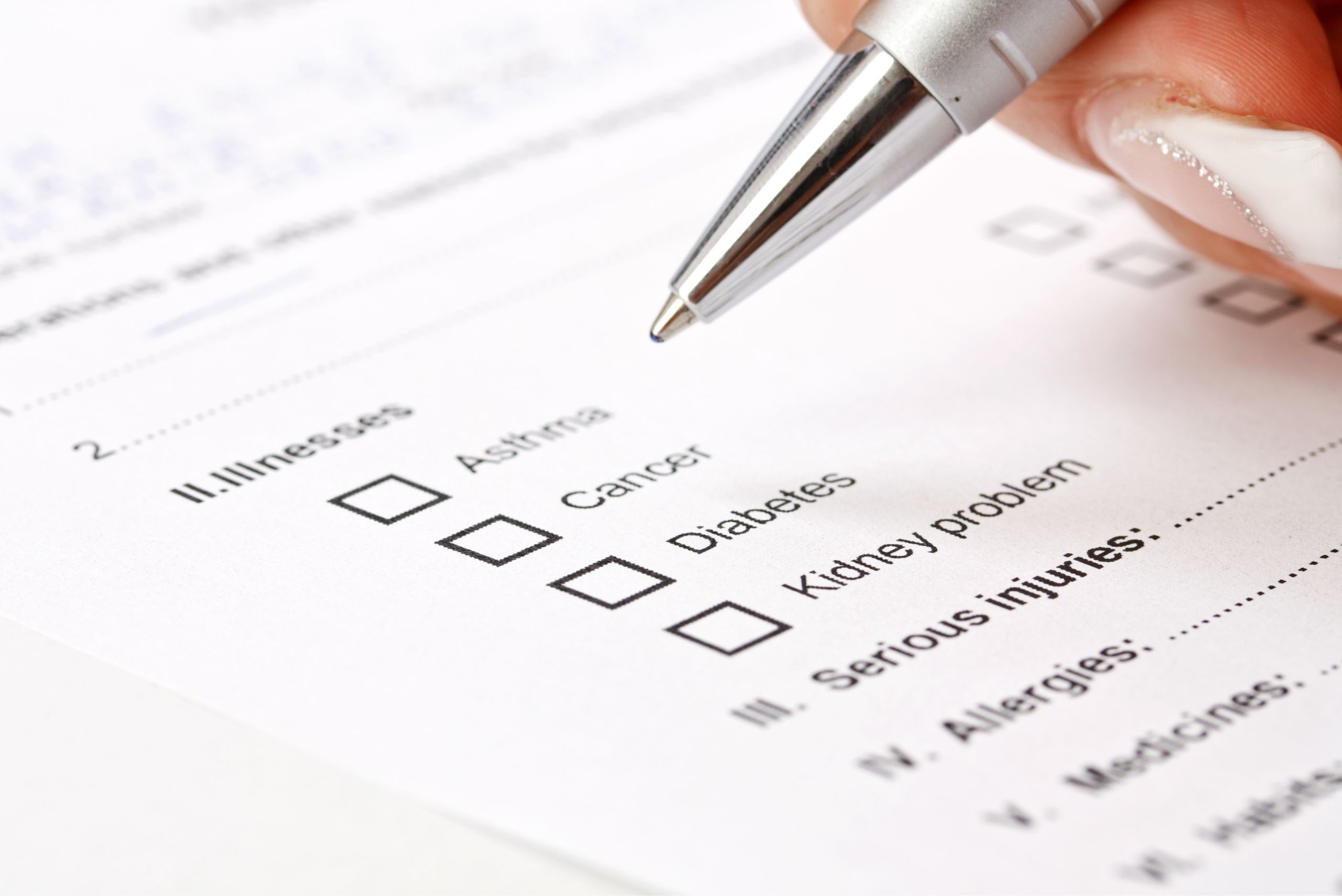
When it comes to determining health risk assessment, user experience is an essential factor to consider. A tool that is user-friendly and easy to navigate can encourage users to complete the assessment and provide accurate information. Here are some key elements to consider when evaluating the user experience of health risk assessment tools:
Ease of Use
A tool that is intuitive and easy to use can help users feel more confident in completing the assessment. It should be clear how to input information and navigate through the tool. Ideally, the tool should also provide clear instructions or guidance throughout the assessment process.
Clarity of Questions
The questions in the assessment should be clear and easy to understand. Ambiguous or confusing questions can lead to inaccurate responses and ultimately affect the accuracy of the assessment. Ideally, the questions should also be relevant to the user’s health and lifestyle.
Customization
A tool that allows for customization can help tailor the assessment to the user’s specific needs. For example, a tool that allows users to input their own health goals or concerns can provide more personalized recommendations and feedback.
Feedback
The tool should provide clear and actionable feedback based on the user’s responses. This feedback should be presented in a way that is easy to understand and relevant to the user’s health and lifestyle. Ideally, the tool should also provide resources or recommendations for further action.
Overall, a health risk assessment tool that prioritizes user experience can encourage users to complete the assessment and provide accurate information. By considering the ease of use, clarity of questions, customization, and feedback, users can feel more confident in taking charge of their health.
Health Status and Comorbidities in Risk Assessment
When assessing an individual’s health risk, health status and comorbidities are essential factors to consider. Health status refers to an individual’s overall physical and mental health, including any chronic conditions, disabilities, or limitations. Comorbidities are the presence of two or more chronic conditions in an individual, which can complicate their health outcomes and increase their risk of adverse events.
Health risk assessment tools use a mix of objective and subjective data to identify an individual’s health status and comorbidities. Objective data includes medical history, physical examination, and laboratory tests, while subjective data includes self-reported information such as lifestyle habits, family history, and social determinants of health.
Some health risk assessment tools, such as the National Healthy Worksite Program’s Health and Safety Climate Survey, assess an individual’s health status, health behaviors, readiness to change, needs and interests related to worksite health and safety, and work-related health history. Other tools, such as the institutional COVID-19 risk assessment tool, designate patients as Tier 1 (low risk for hospitalization), Tier 2 (intermediate risk for hospitalization), or Tier 3 (high risk for hospitalization) based on their comorbidities and other risk factors.
It is important to note that health risk assessment tools should not be used in isolation to make clinical decisions. Instead, they should be used as part of a comprehensive approach to care management, which includes shared decision-making with the patient, clinical judgment, and consideration of the patient’s individual circumstances and preferences.
In conclusion, when using a health risk assessment tool, it is crucial to consider an individual’s health status and comorbidities to accurately identify their risk of adverse health outcomes. By incorporating both objective and subjective data, health risk assessment tools can provide valuable information to guide clinical decision-making and improve patient outcomes.
Role of Community in Health Risk Assessments

Health risk assessments involve the identification of potential health hazards and the evaluation of the likelihood and severity of harm to individuals or communities. The community plays a crucial role in the assessment process as it provides valuable information on the health status, lifestyle, and health concerns of its members.
Community involvement in health risk assessments can take various forms, including community surveys, focus groups, and community meetings. These activities help to identify the health concerns and priorities of the community and provide a platform for community members to voice their opinions and concerns.
Community members can also participate in the assessment process by providing data on their health status, lifestyle, and environmental exposures. This information can be used to identify potential health hazards and to evaluate the likelihood and severity of harm to individuals or communities.
Involving community members in the health risk assessment process can also help to build trust and increase transparency. By involving community members in the assessment process, they can see firsthand how the assessment is conducted and how decisions are made.
When it comes to adult patients, involving them in the health risk assessment process can help to increase their awareness of potential health hazards and empower them to take steps to protect their health. Patient involvement can also help healthcare providers to identify patient-specific risk factors and develop targeted interventions to reduce the risk of harm.
Overall, community involvement in health risk assessments is critical to ensuring that the assessment process is comprehensive, inclusive, and transparent. By involving community members and patients in the assessment process, we can identify potential health hazards, evaluate the likelihood and severity of harm, and develop targeted interventions to reduce the risk of harm.
Centers for Disease Control and Prevention Guidelines
The Centers for Disease Control and Prevention (CDC) provides guidelines for healthcare personnel (HCP) risk assessment in the workplace. These assessments can identify actual or potential infection risks for populations of HCP and inform measures that reduce those risks.
The CDC recommends that HCP risk assessments take into account job duties and other factors that may increase exposure to infectious agents. These factors may include patient population, work environment, and exposure to infectious agents through procedures or other activities.
The CDC guidelines also provide recommendations for preventing healthcare-associated infections (HAI). These infections are a threat to patient safety, and the CDC provides national leadership in surveillance, outbreak investigations, laboratory research, and prevention of HAIs.
The CDC guidelines for HCP risk assessment and prevention of HAIs can be used as a tool for healthcare facilities to evaluate their current infection control practices and identify areas for improvement. By following these guidelines, healthcare facilities can ensure that they are providing a safe environment for both patients and HCP.
Overall, the CDC guidelines for HCP risk assessment and prevention of HAIs provide a comprehensive framework for healthcare facilities to evaluate and improve their infection control practices. By following these guidelines, healthcare facilities can reduce the risk of infection for both patients and HCP, ultimately improving patient outcomes and ensuring a safe workplace for HCP.

